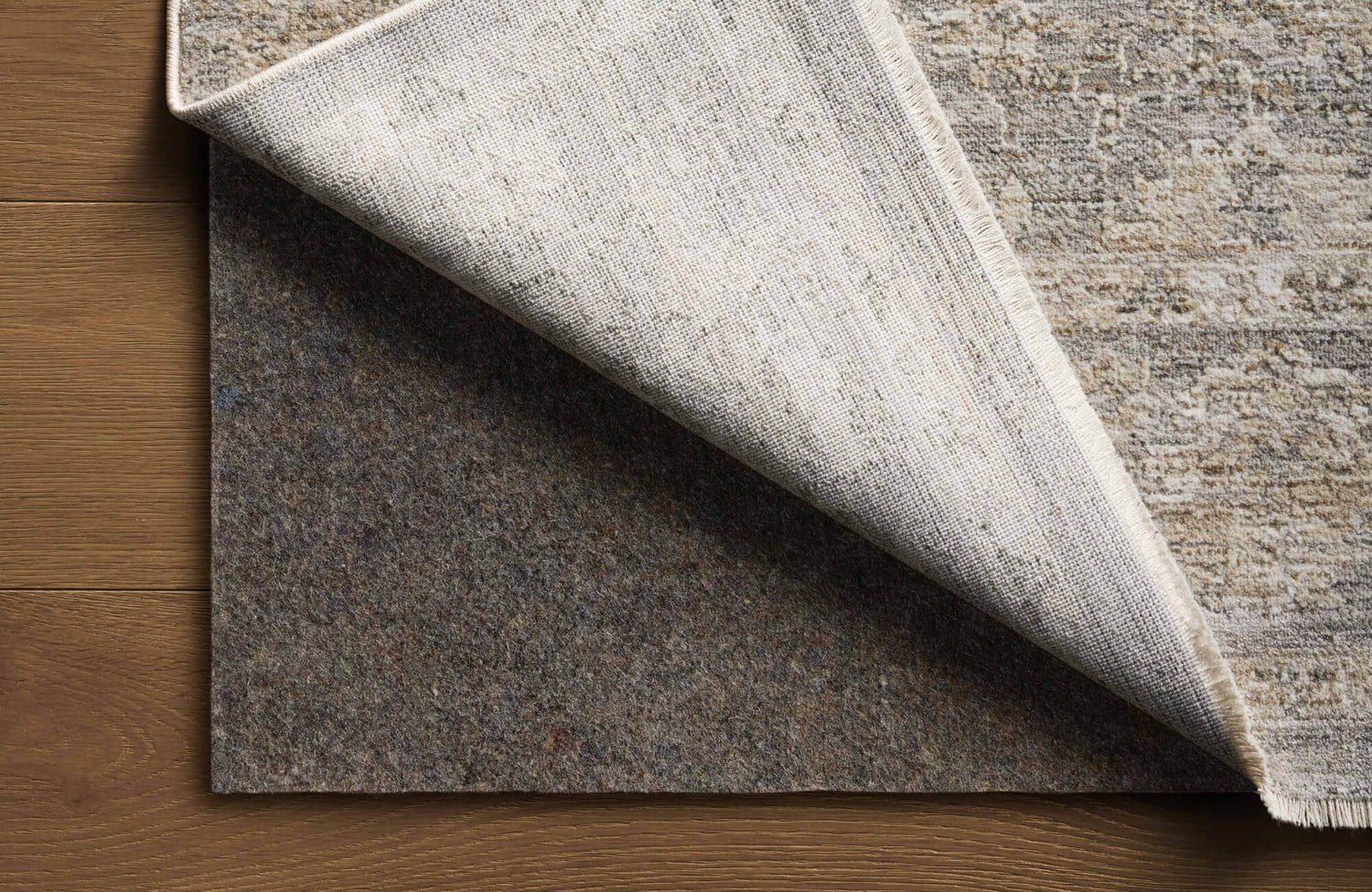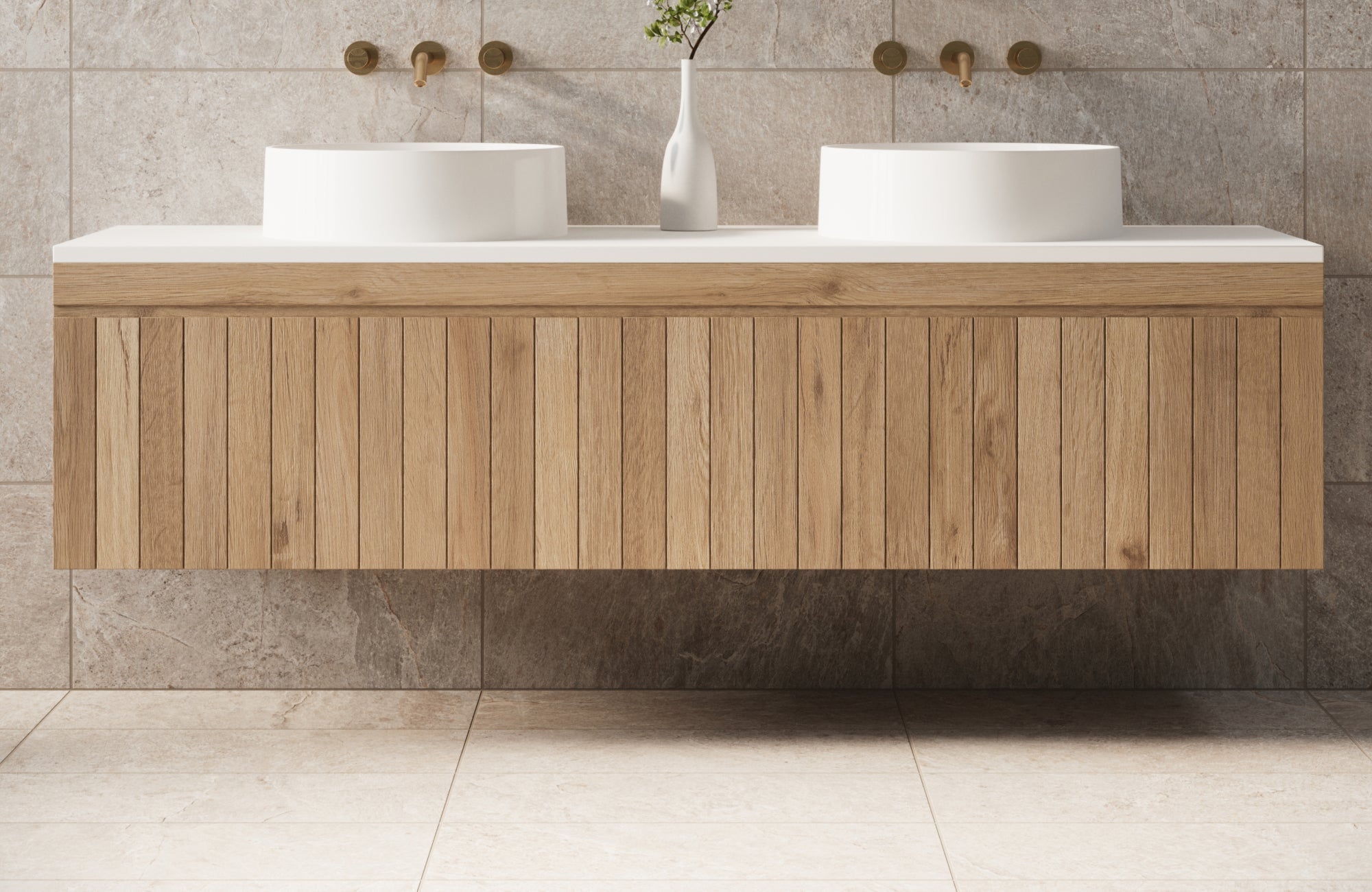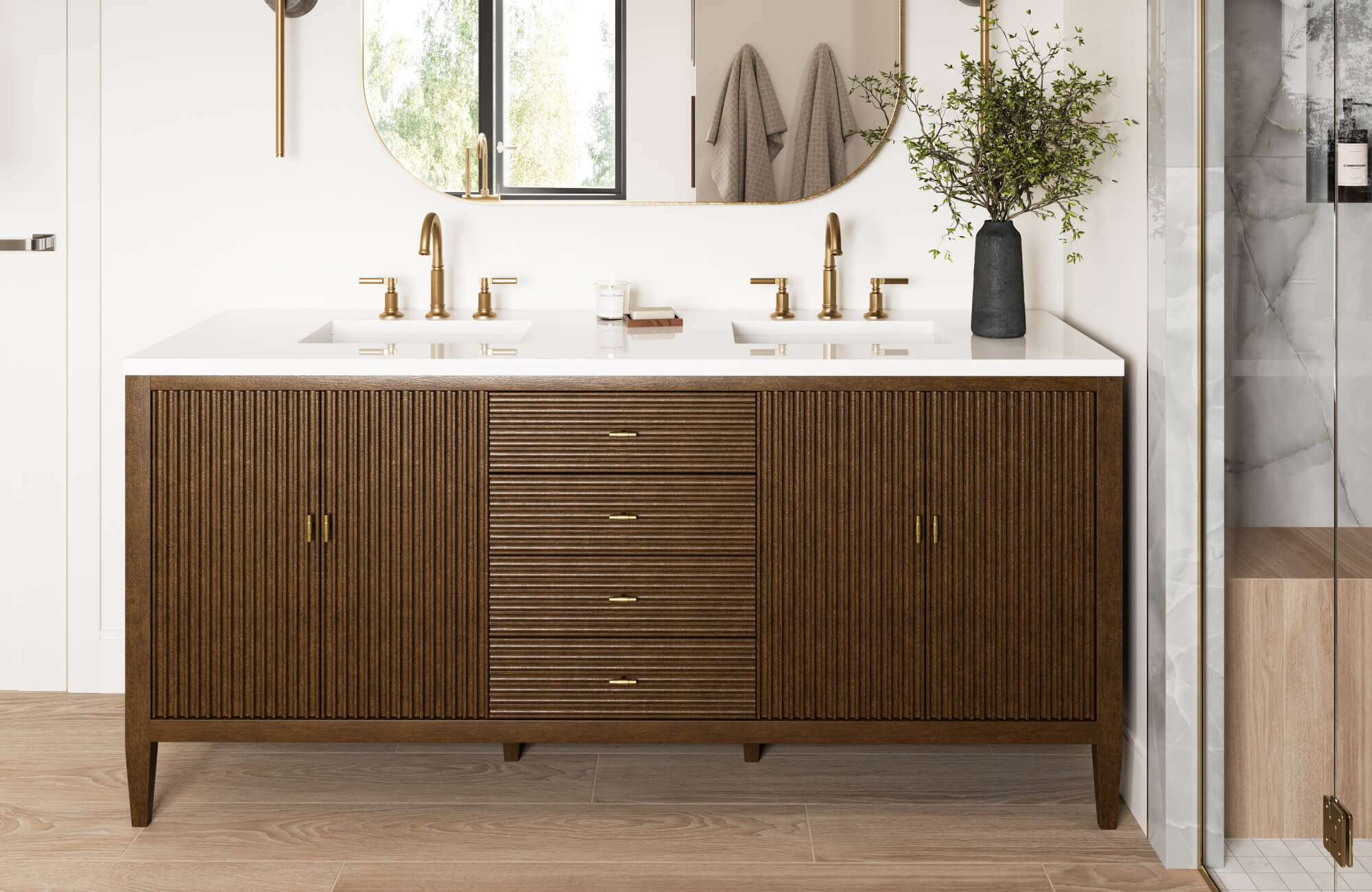A rug that won’t stay in place can quickly go from stylish to stressful. Whether it’s curling at the corners or shifting every time someone walks by, rug slippage isn’t just annoying; it can be a safety concern, too. And it doesn’t always depend on the rug’s quality. Often, it comes down to the floor it’s sitting on and how it’s secured underneath.
In this article, we’ll talk about why rugs slip, what makes certain materials more prone to movement, and which methods actually work to keep them stable. From rug pads to layout tips, here’s how to keep your rug from wandering.

Why Rug Slippage Happens in the First Place
Even if your rug looks great in a room, it can become a hazard if it keeps sliding out of place. Slippage usually comes down to a few physical factors: what type of flooring it’s on, how heavy the rug is, and how often people walk through the space. These elements work together to either help the rug stay in place or send it sliding around with every step.
Smooth Flooring Surfaces and Lack of Grip
Hardwood, tile, and laminate floors are beautiful but offer very little natural traction. Their smooth finishes don’t give rugs much to hold onto, especially if the rug has no backing. As a result, even normal daily movement can cause the rug to slide, fold, or drift out of place. This can create a space that feels unsteady, especially in rooms where people walk through regularly.
The issue tends to show up more in open layouts or large floor spans. For instance, in a wide hallway or a tiled living area, smaller rugs may feel like they have no grip at all. Without a support layer underneath, the lack of resistance causes them to shift with even light steps. That makes the flooring look great, but the rug is unstable.
Lightweight Rugs and Busy Areas
Rugs made from thin or lightweight materials often don’t stay anchored without added support. Without enough weight to hold them down, they tend to move easily, especially during busy daily routines. You might notice them bunching up or curling at the corners after just a few hours of use. This is particularly true with flat-weave rugs or smaller mats.
Rooms with constant movement, like kitchens, hallways, or entry points, highlight this problem even more. A lightweight rug in these spaces may shift several times throughout the day. Also, if the rug doesn’t have some kind of grip or anchoring system, it becomes more than just annoying—it can be a hazard. It’s the combination of light material and repeated use that causes these rugs to slip more than others.
Improper Rug Placement or Poor Fit
Even a high-quality rug can slip if it isn’t placed properly or doesn’t fit the room well. Rugs that are too small or oddly positioned tend to curl at the edges, especially when placed near doors or furniture legs. This awkward fit creates uneven pressure points that make the rug bunch or shift. For example, a rug that just barely fits under a coffee table might still slide when bumped or walked over.
Also, the corners often lift if the rug is stretched across an uneven surface or layered poorly. These small imperfections lead to noticeable shifts over time, especially without the right support beneath. A rug should complement the layout, not fight against it. When size and placement are off, it sets the stage for slipping and instability.

Do Certain Rug Materials Slip More Than Others?
Not all rugs behave the same when placed on smooth floors, and much of that comes down to the materials used. Both the surface pile and the backing affect how well a rug grips the ground. Below, we’ll look at common rug types and what to expect in terms of natural traction and slippage.
Synthetic Rugs
Synthetic rugs, like those made from polypropylene or polyester, are popular because they’re durable and affordable. However, they often come with slicker backings that don’t naturally cling to floors, especially if the rug is lightweight or lacks a textured grip. While the pile itself isn’t usually the issue, it’s the underside that causes trouble. Many synthetic rugs benefit from added support, like a non-slip pad underneath. On their own, they’re more likely to slide, especially in open areas with smooth flooring.
Wool Rugs
Wool rugs, such as our Lafferty Wool Blend Rug in Dove above, tend to be heavier than synthetic options, which already gives them a better chance of staying in place. Their thicker, denser weave also helps them grip the floor a bit more naturally, especially when laid over materials like wood or tile. However, even wool rugs can move around if they don’t have a proper backing. Some wool styles come with cotton or jute undersides, which don’t always offer much friction. That’s why size, weight, and rug placement still matter, even for heavier materials like wool.
Flat-Weave Rugs
Flat-weave rugs, including kilims and dhurries, are some of the slipperiest options out there. Their thin, low-pile construction means they sit very lightly on the floor, with almost no weight to hold them down. These rugs usually don’t come with any sort of grip underneath either, making them especially prone to sliding in busy or open spaces. For instance, a flat-weave rug in a hallway or entryway will often bunch up unless something holds it in place. Their look may be minimalist, but they usually need added support to stay put.
The Best Rug-Securing Options (Pros and Cons)
When it comes to keeping a rug from slipping, some methods are more effective or practical than others. From underlayment materials to clever placements, each option has its strengths depending on your space and flooring. Below, we’ll walk through the most common solutions, what they do well, and where they may fall short.
Rug Pads (Felt, Rubber, or Combo Materials)
Rug pads are one of the most reliable ways to keep a rug in place. They add a layer of cushion while also preventing slippage by creating friction between the rug and the floor. Rubber-backed or felt-and-rubber combinations tend to offer the most grip, especially on smooth surfaces like wood or tile. They're also great for protecting your flooring from abrasion over time.
That said, rug pads need to be sized correctly to be effective. If they’re too small, they won’t anchor the edges; too large, and they’ll peek out from underneath. It's also worth noting that some materials work better on certain floor types than others. Taking the time to match the pad to your flooring will help avoid damage and keep things secure.
Rug Grippers and Double-Sided Tape
Grippers and double-sided rug tape offer a quick and affordable solution for slipping rugs. These products are especially useful for thin or lightweight rugs that don’t hold well on their own. They’re easy to install and virtually invisible, making them ideal for high-visibility areas. Also, they don’t require much planning, just peel and stick where needed.
However, they can come with downsides, especially on sensitive flooring. Some adhesives may leave residue or even pull up the finish if not used carefully. Over time, the stickiness can wear down, reducing their grip and requiring replacement. Still, when applied correctly, they’re a handy short-term fix for busy or narrow spaces.
Velcro or Hook-and-Loop Systems
Velcro strips, or hook-and-loop fasteners, provide a strong hold by physically anchoring the rug to the floor. They’re especially helpful for small rugs or those placed in entryways and bathrooms. These systems keep corners flat and help prevent curling or shifting throughout the day. Plus, they're easy to reposition if you decide to move the rug.
The main drawback is the potential risk to delicate floor finishes. Removing the adhesive base may lift or damage wood or laminate if not done gently. Also, not all rugs are well-suited for this method, especially thicker or heavier designs. It’s best used on rugs that are lightweight and see frequent use in high-motion zones.
Furniture Weight and Strategic Placement
Using furniture to anchor your rug is one of the simplest and most natural fixes. Sofas, tables, or beds can keep large sections of the rug in place without any added tools. This approach works particularly well for area rugs in living rooms or bedrooms. It also avoids any adhesive or installation entirely, which helps preserve the floor.
The downside is that not every rug sits conveniently under furniture. If you only have one corner weighed down, the rest may still shift or curl. This method also limits how much you can rearrange the room without affecting the rug's stability. Still, when the layout allows for it, this is a smart, no-fuss way to cut down on slippage.
Choosing the Right Fix for Your Floor Type
Not all floors respond the same way to non-slip solutions. What works on hardwood might not be ideal for tile, and carpeted surfaces need a different strategy altogether. Below, we’ll walk through the best rug-securing methods based on common floor types to help you choose what’s safest and most effective.
What Works Best for Hardwood or Laminate
Hardwood and laminate floors are especially vulnerable to adhesives and abrasive materials, so the safest option is usually a high-quality non-slip rug pad. Look for felt-rubber combinations or natural rubber pads that provide traction without leaving behind residue or discoloration. These pads add grip while also protecting the floor’s surface from potential scratches. Also, they add a bit of comfort underfoot, which is a bonus for larger area rugs.
Be cautious with tapes or Velcro on hardwood, as they can lift the finish or cause long-term damage. For laminate, similar precautions apply; using lightweight, low-impact options helps preserve the surface while reducing slippage. The key is balancing grip with gentle contact so the solution works without becoming a problem. A well-sized, floor-safe rug pad usually checks all the boxes here.
Options for Tile or Stone Flooring
Tile and stone floors tend to be slick, especially with glossy finishes or sealed surfaces. Rug grippers and double-sided tape can be very effective here, provided you use products designed for temporary use and easy removal. Heavier rugs also help naturally resist movement on smooth tile, so weight can be part of the solution. For added grip, corner grippers are useful since tiles often lack the friction needed to hold lightweight rugs.
Be mindful, though, that adhesives can sometimes lose their stick if the floor is dusty or slightly textured. Cleaning the surface before applying tape or pads helps maintain their hold. Also, stone floors can be uneven, which makes edge curling more common; grippers placed strategically can help flatten problem areas. A combination of grip and rug weight often works best in these cases.
Securing Rugs on Carpeted Surfaces
Rugs placed on carpet can slide just as easily, especially thinner or smaller styles. In these cases, a specialty rug-to-carpet pad or anchor system is usually the best bet. These pads are made to grip both the rug and the carpet underneath, helping keep everything in place without causing bunching. Also, layering a heavier rug over the carpet helps reduce movement on its own.
Avoid using standard rubber or felt pads here; they don’t provide the same dual-surface grip and may slip around with the carpet pile. If the rug continues to shift, consider using hook-and-loop systems or even small weights tucked under furniture legs. Entry mats or runners on carpet benefit the most from proper anchoring, since they tend to move with repeated use. A good fit between rug and surface texture makes a big difference on carpeted floors.

Common Mistakes to Avoid When Securing Rugs
Even with the best intentions, a few simple missteps can reduce your rug’s stability—or worse, damage your flooring over time. Below are some of the most common mistakes people make when trying to secure their rugs and what to keep in mind instead.
Using Adhesives That Damage the Floor
Strong adhesives might seem like a quick fix, but they can leave lasting damage on hardwood or delicate finishes. Non-removable tape or glue often peels away protective coatings, leading to discoloration or even costly repairs. It’s especially risky on floors with soft finishes or natural wood grains, where sticky residue can sink into pores. Instead, go for floor-safe alternatives like removable rug grippers or rubber-backed pads. These offer a reliable grip without compromising your flooring in the long run.
Ignoring the Size and Shape of the Rug
Rugs that are too small or don’t align properly with the room are far more likely to shift, curl, or bunch at the corners. When a rug doesn’t have enough surface area in contact with the floor or overlaps oddly with furniture, it can’t stay anchored. Odd shapes like runners or round rugs also need tailored positioning to prevent movement. Getting the right size for your space helps minimize slipping from the start. It also creates a cleaner, more balanced look overall.
Skipping Regular Checks and Replacements
Even the best rug pads or grips wear out over time, and neglecting them leads to renewed slippage or uneven footing. Over months of use, materials can flatten, lose tackiness, or shift out of place without you realizing it. Also, dirt and debris can build up under the rug and reduce grip without showing on the surface. Checking underneath every so often helps catch these issues early and keeps your space safer. Replacing worn-down components before they fail is a simple but smart habit.

Tips for Long-Term Safety and Maintenance
Keeping a rug in place isn’t just about the setup; it also depends on how well you maintain it over time. Pads and grips can wear down, and small changes in your space can affect how stable your rug feels. Below, we’ll talk about simple routines that help prevent slips and make sure your rug stays where it belongs.
Cleaning Under the Rug to Prevent Slip Hazards
Dirt, dust, and debris can quietly collect underneath a rug, creating a slick layer that reduces grip and stability. Even a small buildup can cause pads to slide or edges to lift without you noticing at first. That’s why it’s helpful to lift the rug periodically and do a quick sweep or vacuum underneath. Also, check that nothing has shifted or bunched, especially around corners or furniture legs. This quick habit helps prevent long-term slippage and keeps the area safer for everyday use.
Adjusting for Seasonal Humidity or Floor Movement
As the weather shifts, so can your floors, especially with hardwood or laminate that expands and contracts slightly with humidity. These subtle changes can affect how your rug pad or gripper performs, sometimes loosening its hold or causing minor repositioning. For example, a rug that sat flush in winter may buckle slightly come summer if the floor swells. Checking alignment seasonally helps you stay ahead of those changes and correct anything before it becomes a hazard. It’s a small effort that helps maintain both grip and comfort year-round.
Best Way To Keep Rugs Secure
Keeping a rug from slipping isn’t just about comfort; it’s also about keeping your space safe and functional. Whether you’re working with a thin hallway runner or a large area rug on glossy tile, the right securing method depends on your flooring type, rug size, and how much movement the space sees each day. Taking the time to match your rug with the right support system, whether it’s a well-sized rug pad, strategic placement, or a lightweight gripper, can make a noticeable difference in how your home feels and functions over time.
If you’re unsure which approach fits best in your space, we’re here to help. Our design consultation team can recommend the most practical, floor-safe solutions based on your layout, materials, and daily use. It’s a smart way to make sure your rug not only looks right, but stays right where it should.









